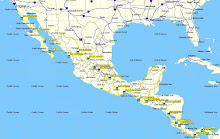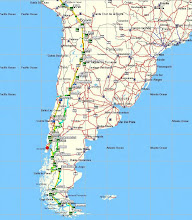On June 11 Peter and Gerry both developed problems with their motorcycles. Gerry’s final drive went out (a BMW has a gearbox on the rear wheel rather than a chain). This is a major repair which Gerry knew was inevitable. Peter’s oil light went on thereby sending him to the dealership as well. They hired trucks to haul their bikes to the dealer in Missoula.
Frank later connected with Gerry and Pete. On their way over a snow covered pass, Pete made a run at a snow bank in the middle of the road, caught his leg and jammed his knee. They did however make it down the mountain and camped in a beautiful spot next to a raging river in Basin, Montana.
The following morning Pete nursed his was to Missoula staying on hard roads. Gerry and Frank drove to Ovando, Montana and hung out at a bar called Trixie’s (no telling what happened there) and spent the night in a teepee at the site where Meriwether Lewis (of Lewis and Clark fame) negotiated his passage home to Missouri with potentates from the Blackfoot Indian Tribe.
On Friday the 12th I took the day off and hung out in Missoula resting and admiring the town. I used this time to repair the rear brake on my bike which I had screwed up the day before.
On Saturday I headed up to Glacier Park to touch base at the Canadian border.

On the way I passed Flathead Lake which is probably 30 miles in length.



I was surprised at the number of sailboats – I can’t imagine a marina surviving with such a short season.
At the border my intention was to take the “Road to the Sun” (a gorgeous highway that twists up the side of a steep mountain, providing breathtaking views of an enormous valley). My last visit to this highway I saw a grizzly foraging a comfortable distance away in the valley.


I found this nice place to take a nap in the afternoon.

As it turned out however, the “Road to the Sun” was closed 1/3 the way up the mountain.


I headed back down the mountain and looked for an alternate way to enter Canada. I stayed in a beautiful old lodge, built in the early part of the last century, which reminded me of the woodsy, doggsy, Paul Harvey lodge at Yellowstone. I had an excellent dinner and breakfast and then departed for the border by way of a dirt road on the western side of Glacier Park. On the way up I was shocked to see that there was nearly 30 miles of burned timber along the road. Glacier, which is only 2 million acres, has had a rash of fires in the past years. In 1987, 450,000 acres burned in the park and its immediate surroundings; in 2001 another 100,000 acres burned and in 2003 another 250,000 acres burned.


On the dirt road I saw a variety of wildlife – a number of whitetail deer (including a small fawn running alongside the road), three black bears – one of which (about 400 lbs.) was walking along the road in front of me and would not run when I honked my horn. Generally, black bears are rather timid so I was a bit surprised by this behavior. I got up a full head of steam and raced by him (about ten feet away) without an incident. This was the image rushing through my head at the time:

When I reached the border, it was not open and had several warning signs and a monument acknowledging the border.



I drove back to Missoula on Sunday and had dinner with Joe, his wife Kristina, Frank and Gerry – all the remaining members from our spectacular ride. Kristina had already downloaded some 2,000 pictures taken by the group – she will forward them to the rest of the group on flash drives.
Gerry and Frank immensely enjoyed their first point to point long distance adventure ride and their lightweight Kawasaki KLR’s were definitely the right choice for the trip. Their bike were 200 lbs. lighter than the rest of our BMW’s but still had sufficient power for the highway driving. It was not all milk and honey for Frank however. On Saturday he slipped on a pavement and gravel road and was not wearing his leather jacket. He had quite a nasty road rash on his arm. When asked why he was not wearing his jacket, he replied that he was delighted he wasn’t because he would have torn a hole in it. My response is – that’s what they’re for! Of the six riders who completed the trip (not including Roger) half were limping. Frank had injured his Achilles tendon at the beginning of the trip and Peter and Gerry injured their knees. All accept one of the BMW’s sustained damage that required some sort of repair.
On Monday morning, the 15th, we dropped our bikes at the BMW dealer in Missoula and caught Joe looking at a new knee device – for the next ride.

I will be posting one final blog in about a month after I have gathered edits and additional pictures from the rest of the group.
We all enjoyed sharing this experience with you and hope it will lead others to take the same journey.

















































